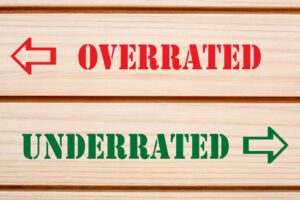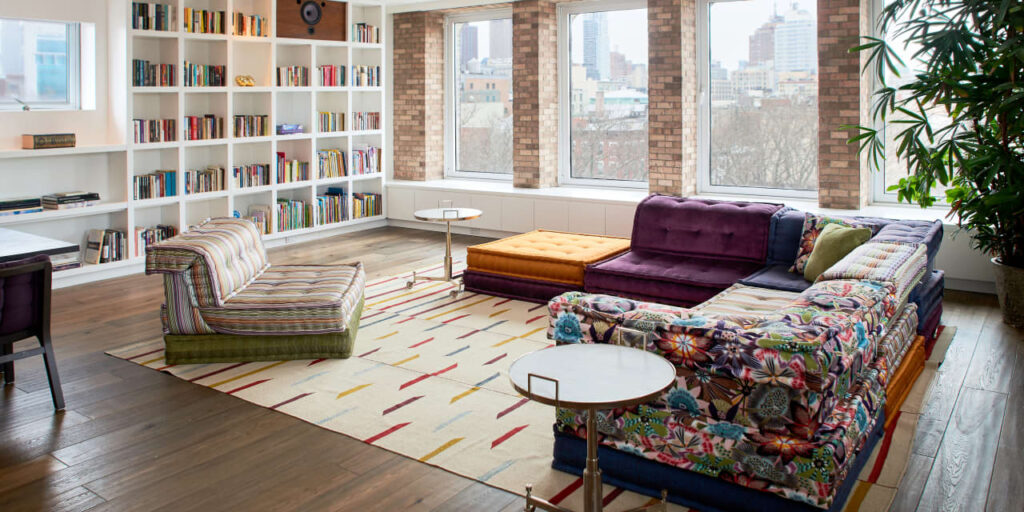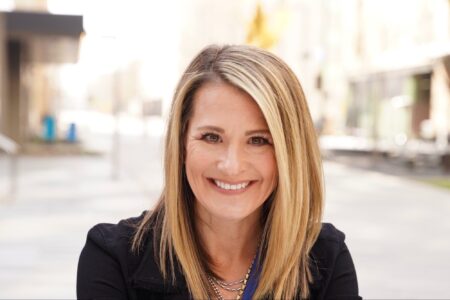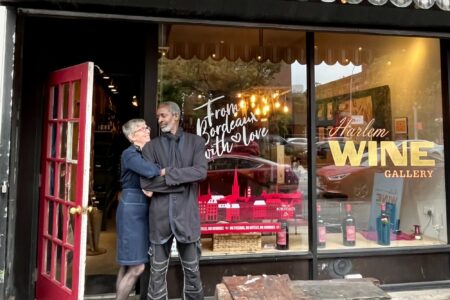Bibliophiles and design enthusiasts in search of the next way to zhuzh up their homes are by now likely plugged into the buzzword “bookshelf wealth.”
Dubbed in design circles as the first big style craze of 2024, it’s a look that means arranging an abundance of books on shelves in an imperfect and unmanicured way, according to interior decorator Bethany Adams, the founder of an eponymous firm in Louisville, Kentucky.
“Bookshelf wealth is the opposite of the over-styled shelves meant to evoke a fancy hotel lobby or boutique,” she said. “The trend is about piling on well-loved and well-read books in every color of the rainbow—hardback and softcover alike—in a way that proclaims: The owner of this collection loves a good read.”
These books are not showpieces—they are there to be read, Adams said, and as such, should be paired with comfortable seating, cozy carpets and excellent lighting.
Bookshelf wealth has fast become a social media sensation. Interest has garnered single TikTok videos millions of views, and the term has also spread on Instagram. Now, interior designers report that they’ve seen a flood of requests from existing and new clients who hire them for bookshelf-wealth projects.
Adams, for one, said that she is currently working on a half-dozen jobs. Her husband, Joshua Adams, a literature professor at the University of Louisville, even tapped her recently to redo the bookshelves in his library as a birthday present.
“Being a professor plus a rare book collector, I have at least 2,000 books which were spilling out of my 6-foot tall shelves,” he said. “Since the ceilings in the room are 10 feet tall, Bethany installed custom-built shelves that are shy of four feet on top of the existing shelves which almost doubled the space.”
More: Celebrity Interior Designer Martyn Lawrence Bullard Shares His Favorite West Hollywood Haunts
In a throwback to another era, Adams also added a book ladder.
“They’re now floor-to-ceiling shelves that hold Joshua’s book collection,” she said. “Stacking shelves is a way to get more room without adding clutter to your space with separate shelves, and the ladder is an old-fashioned touch.”
It ‘Starts With Abundance’
In more advice on how to emulate a bookshelf-wealth aesthetic, Thatcher Wine, the founder of Juniper Custom in Boulder, Colorado, a firm that designs libraries for homes and hotels, said that the simplest way is to add more books to your shelves.
“Bookshelf wealth starts with abundance. Most people have too few books in their homes,” he said. “Whether it’s a result of experimenting with minimalism or moving, it’s time to add them back, lots of them.”
Wine advised diversifying the sources for these books.
“If you get all your books from one place, the odds are that they are all going to look like they came from one place, and that is going to feel staged and not like the organic library you’re aiming for,” he said. He recommended buying a mix of new, previously owned, leather-bound and art reads. And try to include a few sets.
According to Wine, they should be displayed on the front of the shelves to make them shine- ideally lined up a half inch from the edge. “Books at the front of the shelves convey confidence, engagement in the world and invite a lot more eyes to check them out and learn about who you are,” he said.
More: Fine and Rare Wine Prices Are Beginning to Turn Higher
What to Add Besides Books
He also emphasized the importance of bookshelf lighting and suggested making the inexpensive investment in LED strip lights to accent the shelves, a move that gives them the appearance of being “million-dollar built-ins.”
“Buy dimmable warm lights to add a luscious otherworldly glow to your shelves, and experiment with placing them on the sides, the top, or the back of the shelves, there is no wrong way to go,” Wine said.
While the point of bookshelf wealth is to make tomes the main event, Catalina Castano, a designer in New York, said that interspersing them with items can introduce visual interest and texture.
“Art prints and pictures bring color, and ceramics such as bowls, vases and sculptures add form,” Castano said. “Decorative items or collectibles can reflect your interests and personality. They also create a sense of history and can be points of conversation.”
Her advice is to display these items by color and vary the height, even mixing objects on top of books or stacking books horizontally to serve as platforms for displaying small pieces of artwork.
As to where to place bookshelves, Castano said that unexpected areas of the home such as the kitchen are fair game and add charm, character and a twist to conventional décor. Avoid bathrooms, she said, as they have moisture and humidity which can damage the books.
“Kitchen books can add warmth and personality so the kitchen, for example, can be the perfect place for cookbooks. They are not only decorative but practical when you are cooking and can serve as inspiration for an amazing dinner,” Castano said. “Similarly, if you read at night, your bedroom is ideal for a shelf with novels.”
More: Comfort Food, but Make It Vegan
Err Eclectic but Not Chaotic
And don’t forget about book bindings. Castano believes that a mix of different bindings brings in an element of interest but too much variation might appear chaotic. Skip spiral bindings because they can snag on other books or items on your bookshelf, potentially causing damage. They also tend to detract from a chic appearance and can make the bookcase look less stylish, even cheap.
When it comes to very large books, Castano warned that they can overshadow other books and disrupt the visual harmony of the display.
For displaying a collection, Wine’s client, Joanie Witty, of Nashville, was in search of a creative way to showcase her nearly 1,000 books that she has in her vacation home at Blackberry Farm, a resort in the Great Smoky Mountains. They’re spread among several areas of her home including the library, office and family room.
One of Wine’s specialties is to print book jackets that form an image when the tomes are stacked together, giving them the appearance of being mini artworks. “I loved what he did,” said Witty. “I had farm-themed images printed including a barn and field and incorporated in a few knick-knacks like jugs.”
Witty, a designer, has long enjoyed reading, she said, but hadn’t heard of the phrase “bookshelf wealth” until recently.
“If making your collection look beautiful yet organic on shelves the way that Thatcher helped me do is what you call bookshelf wealth, I’ll take it,” she said. “The soul that the books bring to our home is like no other household items.”
This article originally appeared on Mansion Global.
Read the full article here












